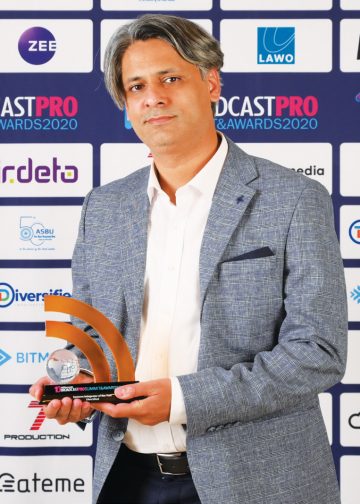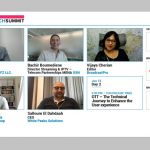He was only eight when he first took apart a phone and put it back together again. A passionate engineer equally comfortable in both IT and broadcast ecosystems, regional veteran Suhail Ahmed, CEO of One Diversified FZ LLC, takes us through the nuances of systems integration in the Arab world.
You are CEO of a newly integrated entity with all the freedom to operate autonomously within the region. How has that been to your advantage?
As a local entity, we understand all the nuances that go with the region and have the full freedom to construct solutions both technically and commercially, and that is a massive advantage. We have a significant advantage over competing peers because we are not bound by central rules. That’s Diversified’s operational model across the board, where all our entities operate autonomously. Of course, we have principles and policies and goals and aspirations, but everything else is localised. That is what motivated me to continue with the company post the acquisition. We remain fully agnostic when it comes to vendors, and aspire towards using the best-of-breed to deliver to our customer’s needs and goals.
How is MENA different from other regions?
Entities often deploy technologies because it ticks a box rather than because they genuinely need it. It is probably one of the reasons why you will not see them adapt a technology to the level that you see of cloud, for example, in Europe and the US. For instance, if you build a 4K studio but only create 1080i, what was the objective of having it? That’s the difference between a 4K project in, say, the US or Europe, where this is a whole end-to-end commercial plan on why it’s being executed. Some customers are well organised because their business models and technologies are aligned. Whenever they come out with a tender, it is aligned with their business objectives – and that’s how it should be.
What approach do you advocate for a broadcast business?
Most people seem to be taking the IT approach. It depends on the kind of expertise you have in your organisation and your overall content objectives. If you are IT-heavy, you will go with IT solutions and it will be a natural evolution; we will continue to see more conversions towards IT, and data will become a key pillar of any media business operations. For the last four years, I myself have pivoted a lot towards data and have been trying to focus on internal IT and DevOps.
Our regional broadcast engineers have adapted well and are keen on upskilling. When it was SD, they moved to HD and 4K over 12G. Also, we see a growing trend with most people doing Amazon certifications being from Tx and MCR. So there is a good passion among engineers here in the Middle East to self-improve and enhance their skills.
How was 2020 for you? Did you secure any projects?
Last year was an unknown for all of us. We had no idea on how we would steer through it but as a group, our first priority was to keep everyone safe; and secondly, to retain everyone we had. We were at the last mile of the Al Arabiya project when Covid hit and it was a challenge to get them on air on March 24, but we worked closely with the MBC team and the local authorities to get them on air. We also delivered a facility for Facebook in Dubai. Towards Q4, we were also contracted by MBC to upgrade and migrate their audio mixers from Studer to Lawo. Lawo was not able to fly out. We have finished the commissioning using a hybrid delivery mechanism with our team working on the ground and Lawo’s engineers remoting in. We currently are in the last steps of handover for this. We have also been busy with a couple of consultancies for projects that require people with commercial, technical and operational knowledge.
There seems to be two factions within the broadcast fraternity – the NDI advocates and the SMPTE ST2110 believers. What is your opinion?
We need both, because one is compressed and the other is uncompressed. When you require each of them depends on what you are trying to achieve with your content. If it is news and you have a remote office, cost plays an important role. If I was trying to achieve something next-gen and wanted to go with baseband, and all it is is a talking head, I will probably capture my studio in NDI, audio in Dante and link it back using SRT because it’s a contribution feed. So across the chain, I can go with low codecs, keep my internet cost low and bring valuable contribution back. When it comes to shows or events, you will need more quality, so I would go with ST2110.
There are two factors that will always impact decisions while choosing technology – timelines and budgets. If you are an existing organisation, ST2110 has many nuances to the configuration and commissioning side, unlike SDI. The design takes more time when compared to an SDI project. Where I would require a month and a half with SDI, the design period for ST2110 would potentially be three months. ST2110 does offer greater resilience in comparison to SDI, and this can be a crucial factor for many organisations.
If an organisation is planning to look at and invest in IP, the first step is to have an internal champion who can take their current operations and work with the SIs and manufacturers to produce a solution that best fits their organisation. Also, the level of training and internal transformation is a key aspect of this undertaking.
One needs to plan ahead as they need to factor more time for an IP-based system. They will need to allocate more time in design and a lot more time in commissioning to ensure the highest level of success for their projects.

What challenges do organisations face in the digital domain?
The lesson learnt from 2020 is that every business must be part of the digital ecosystem. We have seen different digital offerings from major channels in the region. The thing which OTT brings to all this is more in-depth knowledge of your user. Any existing linear channel that is not considering an OTT avenue will be going for closure soon. That is how important it is. Whether it is in-house or you outsource it, there are plenty of sizes, shapes and ways to achieve it. But it must be part of your business objective. The biggest challenge is customer acquisition. All our customers are used to freemium; converting them is a key challenge. Then there is the issue of churn. Why do people leave a platform? It’s simple. If you don’t like the service you will leave.
We can’t lose sight of the fact that in the OTT media business, they are primarily selling content. In our region, there should be a balance between producing local content and buying internationally. I think our region has a massive potential for local content. We are seeing that the local productions are not only going up in quantities, but also in quality. There is a mix of international directors, producers and technicians flying in and bringing knowledge with them. That is fundamental, where there is a learning and mixing of resources, producing local content and then pushing that across your OTT. Technology today is there. You have to sort out what you want to achieve on the business front and then, depending on the target audience and the revenue, you can choose which part to keep in-house and which to outsource.
Two fundamental things will always keep coming back – timeline and budget. Budget will have two parts. First is building up the business infrastructure, which includes the OTT and the acquisition of content. Second is the marketing budget, where you will need x amount to acquire these customers. You need to reach these customers.
There are questions to ask: Which telco will you partner with in which region? How soon can you come into the market and compete with existing players? How strong are your telco offerings? What is your technology roadmap? For the business team, this undertaking could spread across various projects as they bring their product to market and scale it.
Does the tendering process need to change with the times?
We still see a lot of box-specific tenders. The client then loses that commercial advantage. In the world of cloud and SAS models, where you are selling services, everything becomes agnostic. So our tenders need to adapt to that, where if I need to build a studio with on-ground cameras, you can put in quantitative features but don’t put in brands. What operational functions are you trying to achieve? That will get you the best-of-breed responses.

















































































